Sarduri I, son of Lutipri
Sarduri, son of Lutipri, is the second Urartian ruler known by name and the first to leave written sources of his own. As a contemporary of the Assyrian king Shalmaneser III, who mentions him in his annals, he ruled in the second half of the 9th century BC (approximately 840-830 BC). Historians have assumed that Sarduri I was the founder of a new dynasty that ruled the kingdom of Urartu for many following generations. Sarduri I is also regarded as the founder of the capital Ṭušpa (the historic center of modern Van, Turkish Van kalesi). Although this is quite likely, it cannot be sufficiently proven. The dynasty may also have been founded by Sarduri's father Lutibri, who is only known from Sarduri's self-designation "Sarduri, son of Lutibri". It is equally plausible that another predecessor founded the kingdom. The same holds true for the Urartian capital Ṭušpa. Assyrian sources confirm that the kingdom of Urartu existed before Sarduri's reign. For example, Shalmaneser III mentions campaigns against a certain "Aramu (or Arame), the Urartian". However, Aramu's royal seat, which Shalmaneser claims to have destroyed, was not Ṭušpa but Arṣaškun. Whether a relationship existed between Aramu and Sarduri remains unclear. One thing, however, is certain: Sarduri is the first Urartian ruler to be known from his own textual sources. According to this evidence, Sarduri also built the so-called Sardur's castle (Turkish: Mardırburç) at the foot of Van fortress.
Written sources
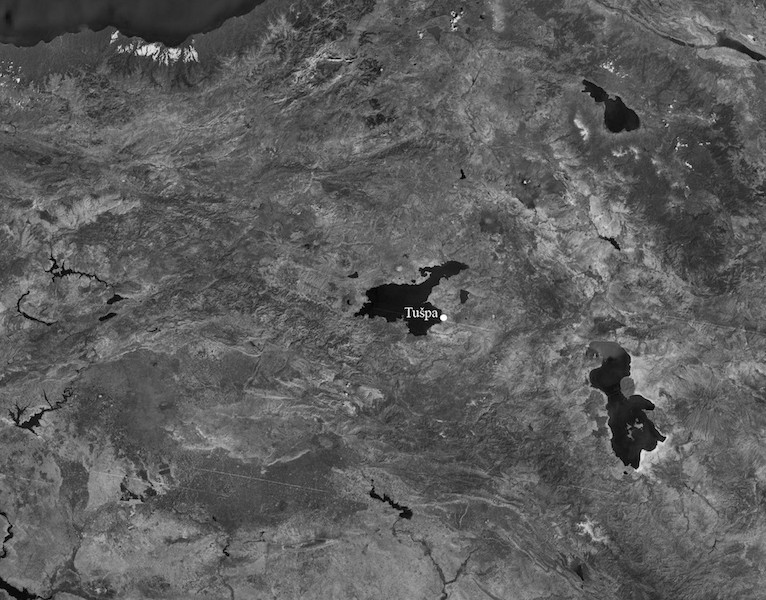
Map showing the distribution of the inscriptions of Sarduri I.
Only one inscription refers to Sarduri I, son of Lutibri, as its author (A 1-1). It is inscribed in six huge blocks of limestone at (the so-called) "Sardur's castle" (Turkish: Mardırburç) at the foot of Van fortress. The year of Sarduri's reign in which the inscription was composed is unknown.
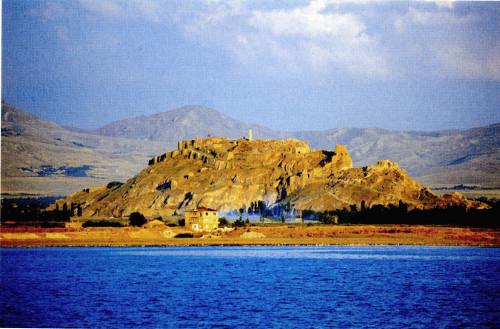
The fortress of Van (Ṭušpa), photo: M. Tümer in: Köroğlu and Konyar 2011: 295
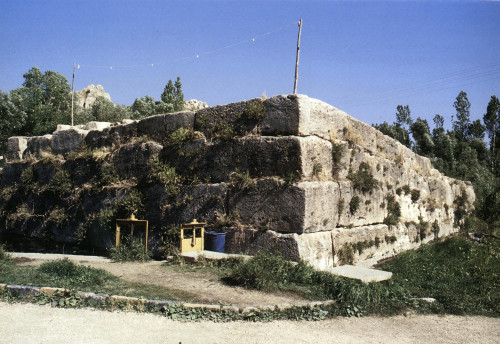
Sardur's castle of Sarduri I on the western border of Van fortress, photo: Salvini 2011: 82
Additionally, the fragmentary cultic inscription A 1-2 might have been composed by Sarduri. There is, however, no clear indication in the text regarding its authorship. No royal or a divine names have been preserved. The location and language of the inscription strongly point towards Sarduri. Like inscription A 1-1 from Sardur's Castle, it was written in the Assyrian language, whereas most of the stone inscriptions by Sarduri's successors were written in Urartian. Additionally, it is inscribed inside a rock niche to the south of the fortress of Van and thus not far away from "Sardur's Castle" (see Salvini 1982; Dinçol – Dinçol 1986).
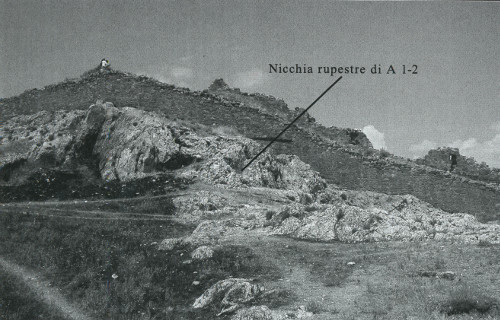
Niche on the south side of Van fortress with the Assyrian inscription A 1-2, photo: CTU III: 52
Royal Titles
Great king, strong king, king of the world, king of the land Nairi, king who has no equal, marvelous shepherd, fearless in battle, king who subdues those insubordinate to him. (I am) Sarduri, son of Lutibri, king of kings, the one who has received the tribute of all kings (CTU A 1-1, lines 1-5a).
Except for the title "king of the land Nairi" all these epithets are known from Assyrian inscriptions (see Roaf 2012: 191-194). Coupled with the fact that the text is written in the Assyrian language and cuneiform script, it is clear that Urartu was strongly influenced by Assyria. These epithets are already attested in the inscriptions of Assurnaṣirpal II, and some of them were no longer in use by the time of Shalmaneser III's reign, indicating that the Assyrian cuneiform script had been adopted a full generation before Sarduri's reign (see Wilhelm 1986; Salvini 1995: 36-37; Kroll et al. 2012: 26-28). However, we have no inscriptions from this period.
Military Activities and Political Development
Shalmaneser III reports that he defeated Sarduri I ("Sēduru, the Urartian") in his twenty-ninth year (Shalmaneser III 014 [http://oracc.museum.upenn.edu/riao/Q004619] [RIMA 3 A.0.102.14] lines 141b–146a; Shalmaneser III 016 [http://oracc.museum.upenn.edu/riao/Q004621] [RIMA 3 A.0.102.16] lines 228'–244'; for the date see Fuchs 2012: 135 with further references) after he had already conducted successful campaigns against "Aramu, the Urartian" in his first, third, and fifteenth years. The campaign against Sarduri I in Shalmaneser III's twenty-ninth year was headed by his field marshal Dayyān-Aššur, who led the troops to Urartu via Bīt-Zamāni by entering the pass at the city of Ammaš and crossing the Arṣania River. Shalmaneser III reports that the Urartian king, "relying on the might of his mighty army," began waging war when he heard about the Assyrians' approach. Shalmaneser III defeated Sarduri I and "filled the wide plain with the corpses of his warriors" (Shalmaneser III 014 [http://oracc.museum.upenn.edu/riao/Q004619] [RIMA 3 A.0.102.14] line 146a; (Shalmaneser III 016 [http://oracc.museum.upenn.edu/riao/Q004621] [RIMA 3 A.0.102.16] lines 235'–236'). Sarduri I, however, managed to flee (Shalmaneser III 016 [http://oracc.museum.upenn.edu/riao/Q004621] [RIMA 3 A.0.102.16] line 236'). Neither Urartian texts composed by Sarduri I nor texts authored by his successors refer to the event.
Building Activities
Sarduri's inscription A 1-1, carved into six huge blocks of limestone at "Sardur's Sastle" at the foot of the fortress of Van, characterizes Sarduri as a great and successful ruler (see "Royal Titles").
Sarduri claims that he brought the foundation stones for this building from the city of Alniunu. The location of this city remains unclear. Belli (1980) suggested that Alniunu was about 17 km south of Van near Edremit, where archaeologists found a "stone workshop." According to Salvini (1995: 35), Sarduri's title "king of the land Nairi" instead puts Alniunu in Ḫubuškia, which later was called "land Nairi". This again might indicate a political link between Urartu and Hubuškia, whose kings also used this title. If this were true, the city of Alniunu would then have been located a long distance from Sardur's castle. Sarduri's statement that he brought the foundation stones from Alniunu to Sardur's castle might then refer to the relocation of an earlier center of power to the newly founded capital, Ṭušpa (Salvini 1995: 35).
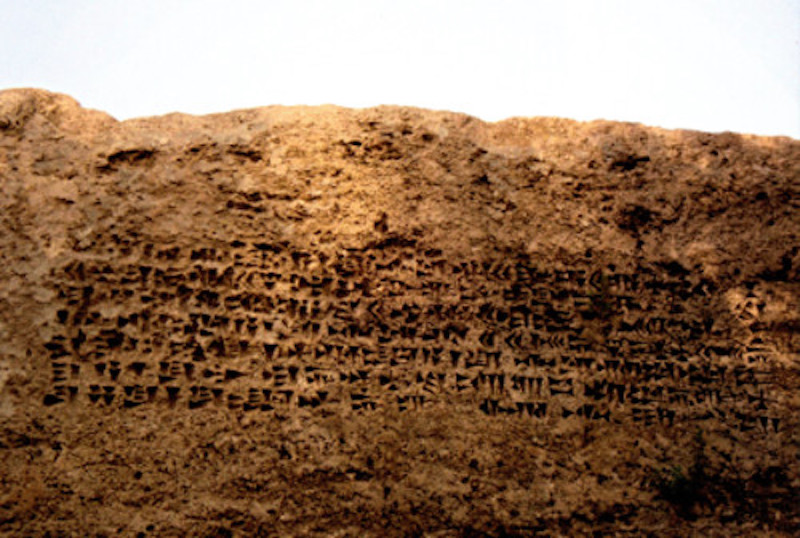
Inscription A 01.01 A on one of the six stone blocks from Sardur's Castle, photo: Salvini 2011: 83
Religious Activities
With respect to religion and the state cult, it is interesting that Sarduri's inscription at Sardur's castle does not refer to the god Haldi. The same is probably true for the very fragmentary cultic inscription A 1-2, located on the southern slope of Van Kalesı, which was likely also composed by Sarduri I. As other evidence suggests, Haldi became the Urartian national god only during Išpuini's reign. Thus, the main sanctuary of Haldi in Muṣaṣir was located outside Urartu's borders during Sarduri's I reign. Theophoric personal names from the Middle Assyrian period further reveal that Haldi was already worshipped in northern Mesopotamia in the second millennium BC (see Mayer 2012: 21-22 with note 6 for further references). Haldi was therefore not an indigenous Urartian deity, but a deity originally at home in northern Mesopotamia.
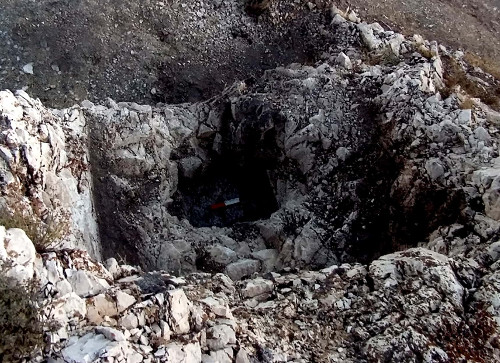
Niche with the inscription A 1-2 written in the Assyrian language and a rectangular recess for the installation of a stele which today is lost, photo: Tarhan (2011: 301)
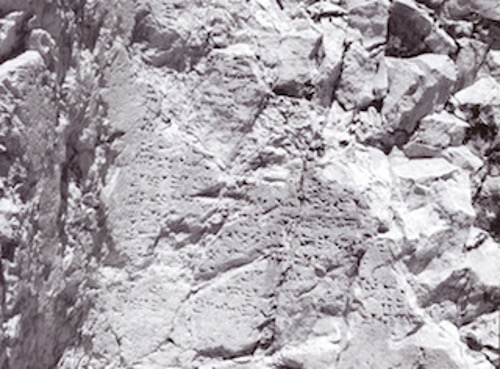
The inscription A 1-2 written in the Assyrian language, photo: CTU III: 52
Further reading
- Belli, Oktay (1980): Alniunu Kenti ve Taş Atölyesinin Keşfi, Anadolu Araştırmaları 8: 115-127.
- Dinçol, Belkis and Ali M. Dinçol (1986): Eine wiederentdeckte assyrische Inschrift auf dem Van-Felsen, Anadolu Araştırmaları X: 351-353.
- Fuchs, Andreas (2012): Urarṭu in der Zeit, in: Stephan Kroll, Claudia Gruber, Ursula Hellwag, Michael Roaf, and Paul Zimansky (eds.), Biainili-Urartu. The Proceedings of the Symposium Held in Munich 12-14. Oktober 2007 (Acta Iranica 51), Leuven: 135–161.
- Kroll, Stephan, Claudia Gruber, Ursula Hellwag, Michael Roaf, and Paul Zimansky (eds.) (2012): Introduction, in: Kroll, Stephan, Claudia Gruber, Ursula Hellwag, Michael Roaf, and Paul Zimansky (eds.) (2012): Biainili-Urartu. The Proceedings of the Symposium Held in Munich 12-14. Oktober 2007 (Acta Iranica 51), Leuven: 1-38.
- Mayer, Walter (2012): Assyrien und Urartu I. Der achte Feldzug Sargons II. im Jahr 714 v. Chr, Alter Orient und Altes Testament 395/1, Münster.
- Roaf, Michael (2012a) : Could Rusa son of Erimena have been king of Urartu during Sargon's Eighth Campaign? in: Kroll, Stephan et al. (eds.) (2012) Biainili-Urartu. The Proceedings of the Symposium Held in Munich 12-14. Oktober 2007, Leuven: 187-216.
- Salvini, Mirjo (1982b): Eine vergessene Felsinschrift mit einem assyrischen Opfertext, in: Nicholas Postgate (ed.), Societies and Languages of the Ancient Near East, Studies in honor of I. M. Diakonoff, Warminster: 327-332.
- Salvini, Mirjo (1995): Geschichte und Kultur der Urartäer, Darmstadt: 63-78.
- Salvini, Mirjo (2004): Reconstruction of the susi temple of Adilcevaz, on Lake Van, in: Antonia G. Sagona (ed.): A View from the Highlands: Trans-Caucasus, Eastern Anatolia and Nordwestern Iran. Studies in Honour of C. A. Burney, Herent: 245-275.
- Salvini, Mirjo (2008a): Minima Urartaica, ARAMAZD III/2: 143-145.
- Salvini, Mirjo (2011): Urartu Tarihine Genel Bir Bakış - An Overview of Urartian History, in: Kemalettin Köroğlu and Erkan Konyar (eds.), Urartu. Doğu'da Değişim. Transformation in the East, Istanbul 2011: 74-97.
- Tarhan, Taner M. (2011): Başkent Tuşpa - The Capital City Tushpa, in: Kemalettin Köroğlu and Erkan Konyar (eds.), Urartu. Doğu'da Değişim. Transformation in the East, Istanbul 2011: 288-335.
- Wilhelm, Gernot (1986): Urartu als Region der Keilschrift-Kultur, in: Volkert Haas (ed.), Das Reich Urartu (Xenia 17), Konstanz: 95-116.
- Zimansky, Paul (1995) : The Kingdom of Urartu in Eastern Anatolia, in: Jack M. Sasson (ed.), Civilisations of the Ancient Near East Vol. 2, New York: 1135–1146.
Birgit Christiansen
Birgit Christiansen, ' Sarduri I, son of Lutipri ', Electronic Corpus of Urartian Texts (eCUT) Project, The eCUT Project, a sub-project of MOCCI, 2021 [http://oracc.museum.upenn.edu/ecut/urartianrulersandtheirinscriptions/sarduriisonoflutipria1/]